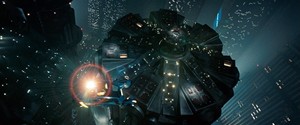One of the best people writing about film is David Bordwell, co-author of the textbook Film Art, a staple of university film courses. It’s great to be able to read his writing for free, on a regular basis, and I’ve plugged one of his articles here before.
Slightly belatedly, I thought it was also worth pointing out his article on shaky camera / fast cut filmmaking, which focuses on Paul Greengrass’s The Bourne Ultimatum. The Bourne flick is long gone from cinemas, but the discussion of this style of direction should be with us for years: how many reviews of modern action films have you seen that complain about this way of shooting? (Certainly all mine do).
What’s notable about Bordwell’s article is that he pushes the discussion well beyond the usual grizzling about this style of shooting and analyses in detail what is going on. As he points out, it’s more than just the length of shots and the shakiness of the camera at work: it’s also about how shots are framed, the proximity of the camera to its subject, the way the camera focusses (and pulls focus), and the placement of cuts (as opposed to simply the length of the shots between the cuts). All this is done in some detail with very clear frame captures from the Bourne film as examples.
